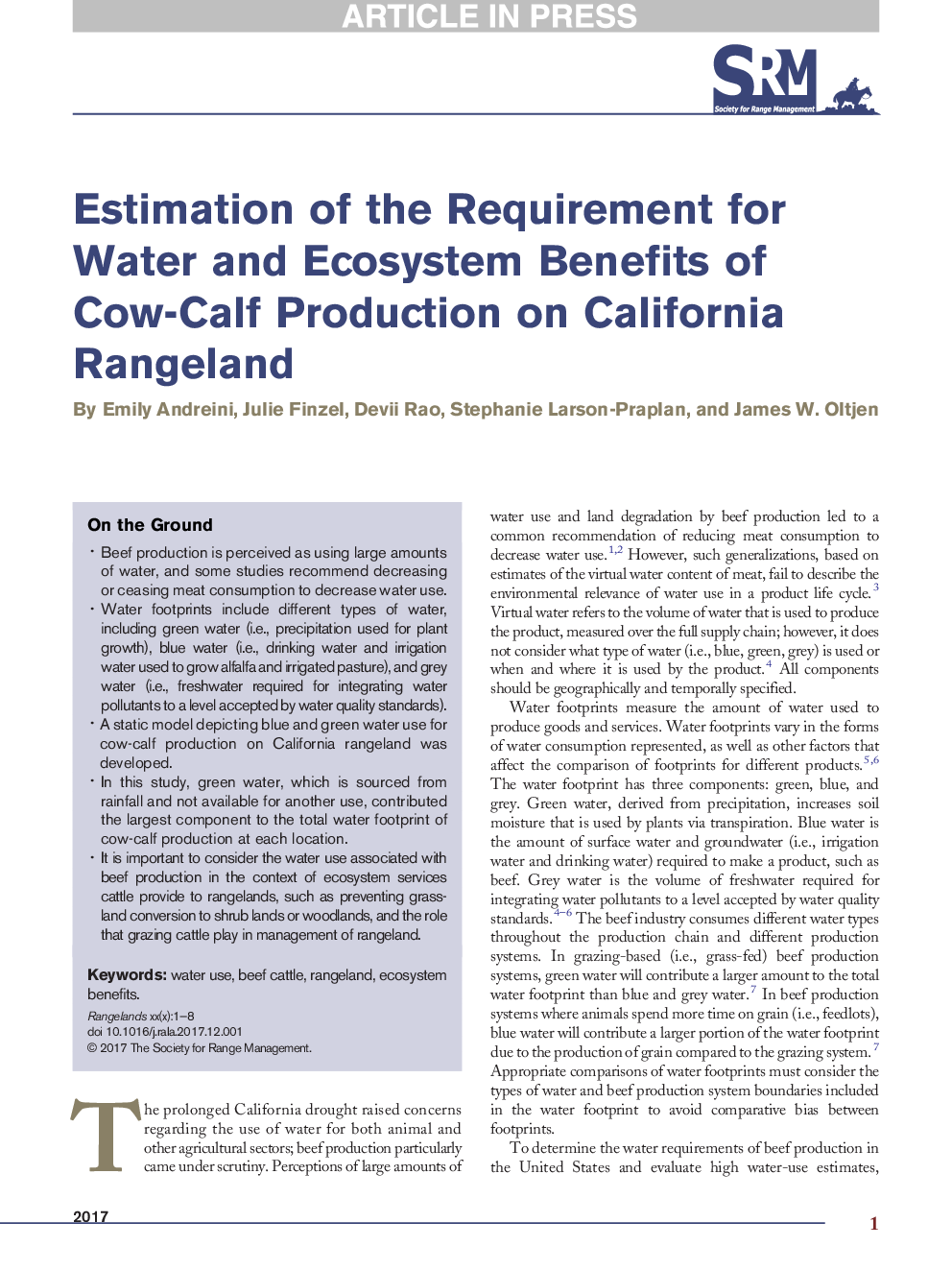| Article ID | Journal | Published Year | Pages | File Type |
|---|---|---|---|---|
| 8849677 | Rangelands | 2018 | 8 Pages |
Abstract
On the Ground
- Beef production is perceived as using large amounts of water, and some studies recommend decreasing or ceasing meat consumption to decrease water use.
- Water footprints include different types of water, including green water (i.e., precipitation used for plant growth), blue water (i.e., drinking water and irrigation water used to grow alfalfa and irrigated pasture), and grey water (i.e., freshwater required for integrating water pollutants to a level accepted by water quality standards).
- A static model depicting blue and green water use for cow-calf production on California rangeland was developed.
- In this study, green water, which is sourced from rainfall and not available for another use, contributed the largest component to the total water footprint of cow-calf production at each location.
- It is important to consider the water use associated with beef production in the context of ecosystem services cattle provide to rangelands, such as preventing grassland conversion to shrub lands or woodlands, and the role that grazing cattle play in management of rangeland.
- Beef production is perceived as using large amounts of water, and some studies recommend decreasing or ceasing meat consumption to decrease water use.
- Water footprints include different types of water, including green water (i.e., precipitation used for plant growth), blue water (i.e., drinking water and irrigation water used to grow alfalfa and irrigated pasture), and grey water (i.e., freshwater required for integrating water pollutants to a level accepted by water quality standards).
- A static model depicting blue and green water use for cow-calf production on California rangeland was developed.
- In this study, green water, which is sourced from rainfall and not available for another use, contributed the largest component to the total water footprint of cow-calf production at each location.
- It is important to consider the water use associated with beef production in the context of ecosystem services cattle provide to rangelands, such as preventing grassland conversion to shrub lands or woodlands, and the role that grazing cattle play in management of rangeland.
Related Topics
Life Sciences
Agricultural and Biological Sciences
Agricultural and Biological Sciences (General)
Authors
Emily Andreini, Julie Finzel, Devii Rao, Stephanie Larson-Praplan, James W. Oltjen,
